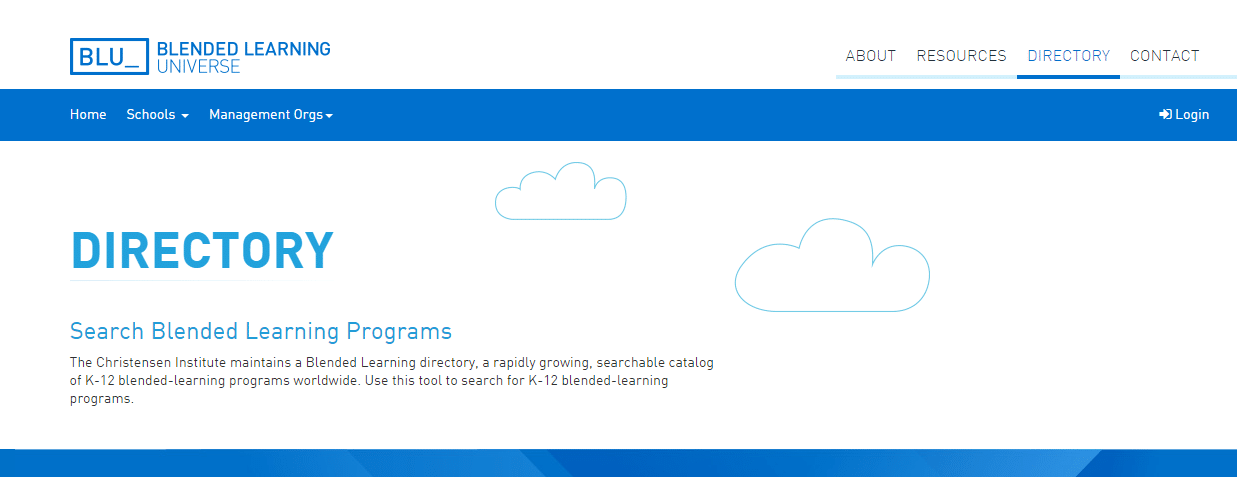Thousands of school districts across America—over 75 percent by some estimates—are awakening to the possibilities of blended learning. Most commonly they’re chasing the goal of personalizing learning, expanding access to learning experiences beyond their district boundaries, or looking for a way to control costs. We are not short on touting these potential benefits in our new book, Blended: Using Disruptive Innovation to Improve Schools.
The problem, however—and one that we readily concede in the book—is that blended learning can miss its mark. Leaders find that despite their best intentions, their programs fail to deliver.
In one example, the superintendent of a school district in Pennsylvania confessed that, at first, the district’s self-made online courses were nothing more than scanned lesson materials and worksheets posted online as PDFs. Not only were those online courses generic and impersonalized, but the student experience was also inferior in every way relative to a typical face-to-face classroom, except for the fact that students could do the courses when and where they preferred. At least a face-to-face teacher can vary the monotony of lesson format, whereas PDF files are the extreme of one-size-fits-all.
That district’s experience is not unique. Many online and blended programs fail to deliver the personalization they advertise. Brian Bridges, former director of the online-course review organization CLRN, said that 90 to 95 percent of the online courses CLRN reviewed are “lazy” about personalizing instruction. If a student fails a formative assessment question, the course acknowledges the incorrect answer and then asks the student to provide a different answer. If that answer is incorrect, the course again asks the student to provide a new answer. Once the correct answer is provided, the course says “good job” and moves the student to the next lesson. In contrast, in the more personalized courses (only a few of the 700 courses that CLRN evaluated), if a student fails the assessment, the course keeps the student from progressing until she is competent in the day’s skills. The course provides new examples and teaching methods to personalize for the individual’s needs until she truly grasps the concept and demonstrates mastery.
Furthermore, some districts find that the intended budget relief from blended learning never materializes. The authors of this Fordham Institute paper estimate that the cost of operating a blended model are on average $1,100 less per student each year compared to a traditional model, but they emphasize that these savings estimates vary dramatically. Some programs realize substantial savings, which they then redeploy in the form of higher teacher salaries, more professional development, and so forth. Others are disappointed to find that I.T. and transition costs prevent them from freeing up their budgets as they had hoped.
These missed goals are avoidable. The majority of blended programs in our research are successful in adding a great measure of personalization to the student experience, offering unprecedented access to a geographically unbounded range of learning opportunities, and conserving their funds. The new Blended Learning Universe [BLU] Directory profiles hundreds of programs that are posting solid results across the world. The Bill & Melinda Gates Foundation has led some of the best work identifying the common elements of programs that are truly personalized for each student. This RAND paper (page 6 in particular) highlights those elements and serves as a guidepost for others who want to ensure that their efforts to personalize learning hit their mark.
Blended learning is a critical enabler to bring about personalization at an affordable price at scale across America. In fact, the majority of K-12 students will not experience a personalized education without blending in an online component. Nevertheless, although blended learning is a necessary ingredient, it’s not sufficient. Leaders must design and implement the right strategy to realize the full promise. Schools are learning that throwing technology at a problem is not enough. They are finding that their efforts depend on a much more strategic design, specifically tailored to their goals.



